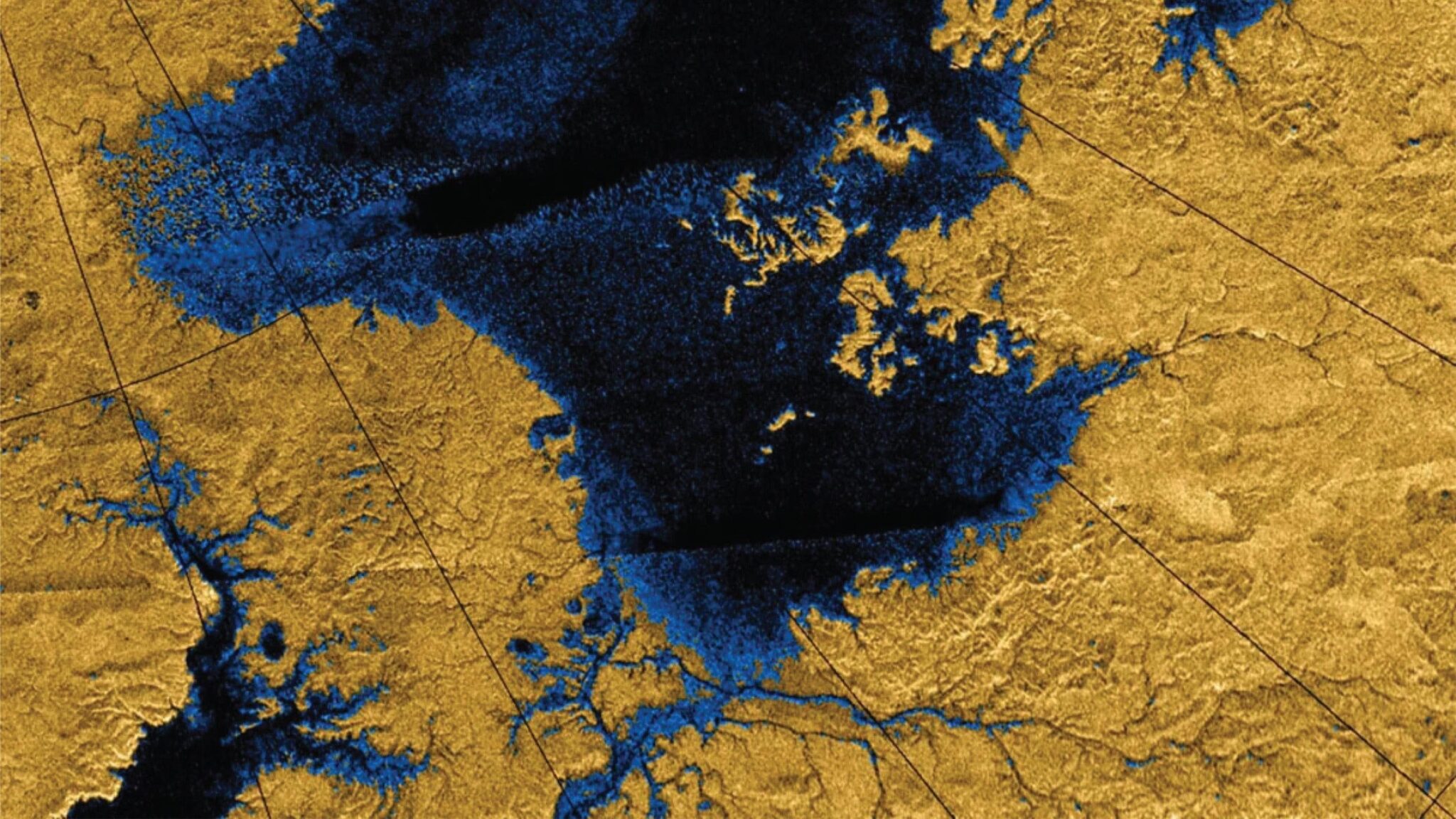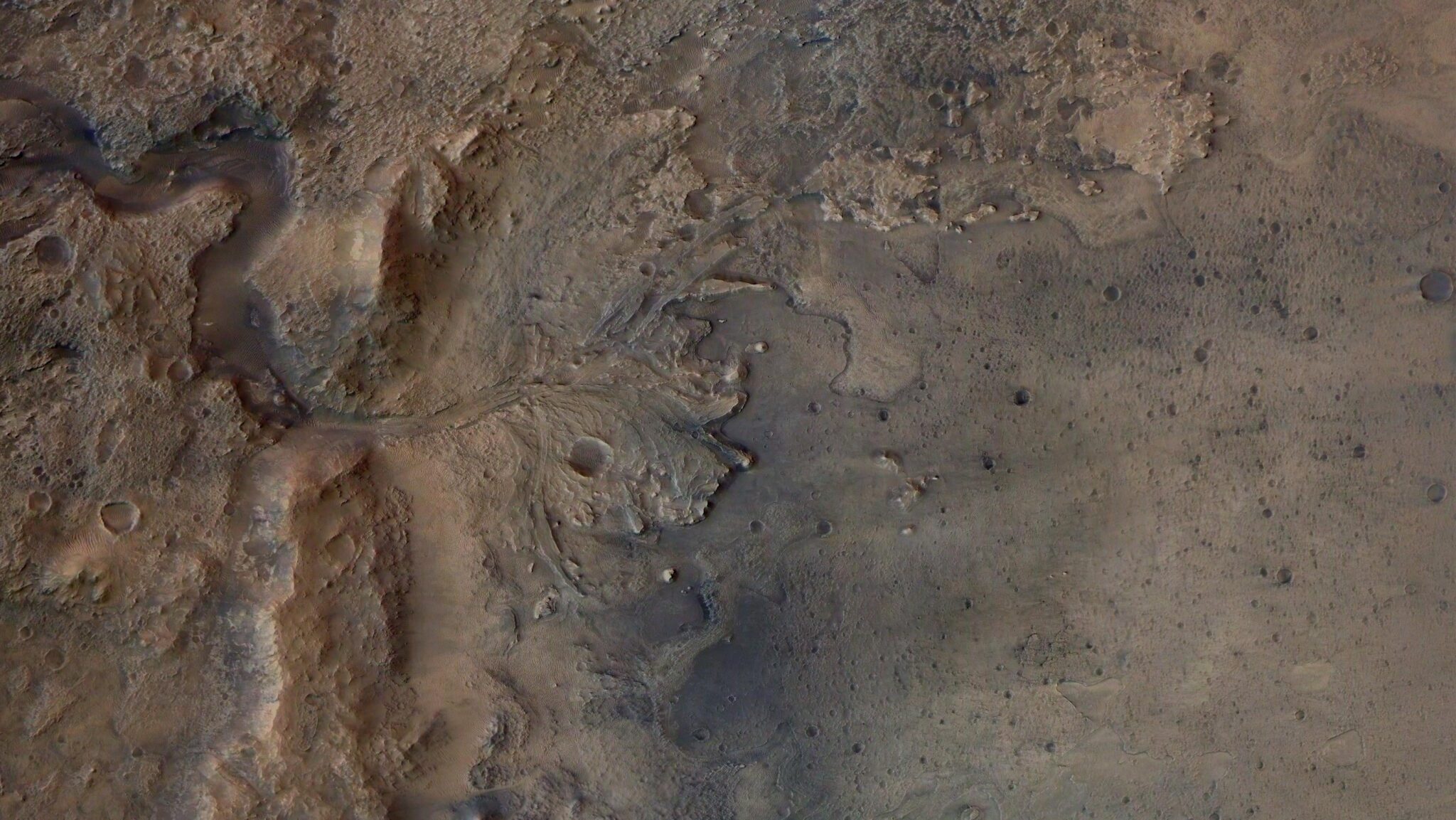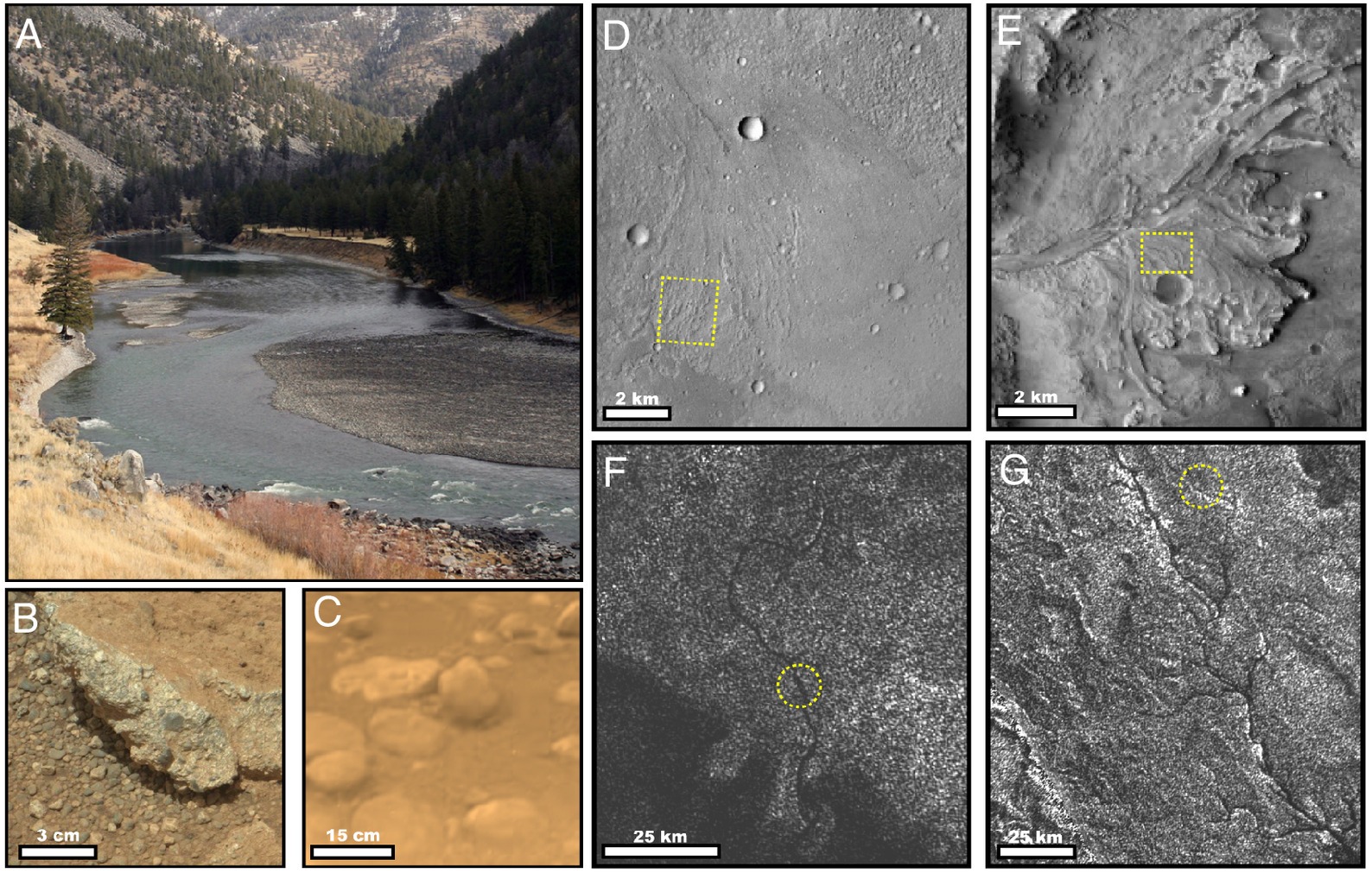Mars and Saturn’s moon Titan are of common scientific interest: both worlds can boast riverbeds similar to those that flow on our planet. Although the water networks of Mars have long dried up, rivers still flow on the surface of Titan, but not from water, but from liquid methane and ethane. Both planets are of scientific interest because they can reveal the role of rivers in shaping the planet’s environment and can suggest where to look for life beyond Earth.

A group of researchers calculated dried channels on Mars and active areas of Titan using images from spacecraft. The team’s research was published in the journal Proceedings of the National Academy of Sciences.
Researchers led by Massachusetts Institute of Technology planetary scientist Taylor Perron calculated the river flow rate on Mars and Titan using equations originally developed to measure the flow rate in Earth’s waterways. The equations have been adapted to apply to Mars and Titan, in particular to rivers that flow into the huge lakes of the moon, and dried-up river deltas that flow into craters on the Red Planet where lakes are believed to have once been.

The researchers found that the rivers probably flowed for 100,000 years in Gale Crater, where the Curiosity rover is still wandering, and at least 1 million years around the Jezero crater, where the Perseverance rover is looking for signs of ancient microbial life.
“The Martian rivers we studied were not just fleeting. They appear to have flowed over prolonged time periods during which conditions favorable to life may have been maintained. The flow rates in the rivers we studied on Titan may be as large as in big rivers on Earth, even though Titan is smaller than Earth,” Perron said.
Amazing world on Titan
Titan’s maps have revealed an amazing world full of massive sand dunes, methane rains and hydrocarbon seas. Although Titan is alien in many ways, it has an atmosphere, flowing rivers and seas, which makes it surprisingly similar to Earth. Images of Titan taken by the now decommissioned Cassini spacecraft have revealed previously unknown aspects of the planet, which is shrouded in a thick atmosphere. The Huygens spacecraft even landed on the surface of Titan in 2005 and managed to send a picture to Earth from the Moon before it got dark there about an hour later.
“Titan is the most Earth-like place,” said Samuel Birch, also a planetary scientist at the Massachusetts Institute of Technology and lead author of the study.

Until the next Dragonfly mission arrives on Titan around the 2030s, scientists will have to work mostly with Cassini data to understand the surface of Titan. According to Perron, the orbiter’s mission to Titan will give researchers the opportunity to see it “as if wearing glasses for the first time”.
There are still questions, in particular, why there are not enough river deltas on Titan. Lunar rivers are capable of carrying large amounts of liquid methane and ethane and have a lot of sediment, but do not form such multifaceted features as terrestrial waterways. Researchers are still working on why this is happening, and it will probably help science better understand Titan.
Earlier we reported on how the deepest and fastest rivers in the Solar System existed on Mars.
Follow us on Twitter to get the most interesting space news in time
https://twitter.com/ust_magazine

